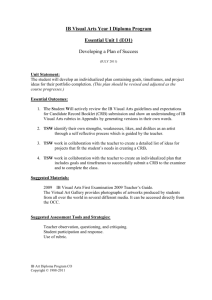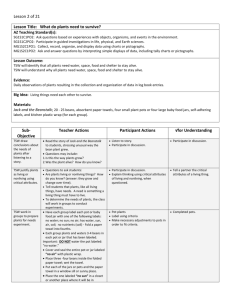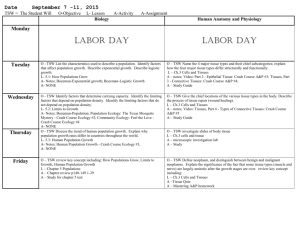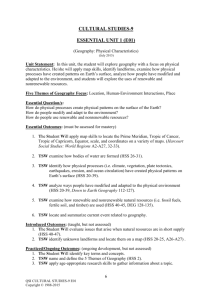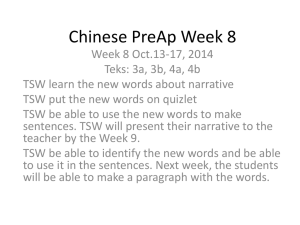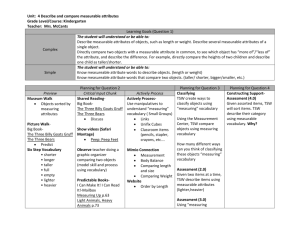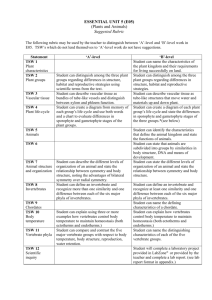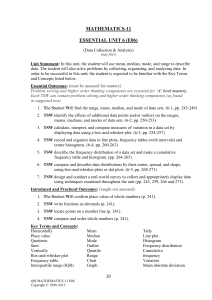CULT STDS-7 E02
advertisement
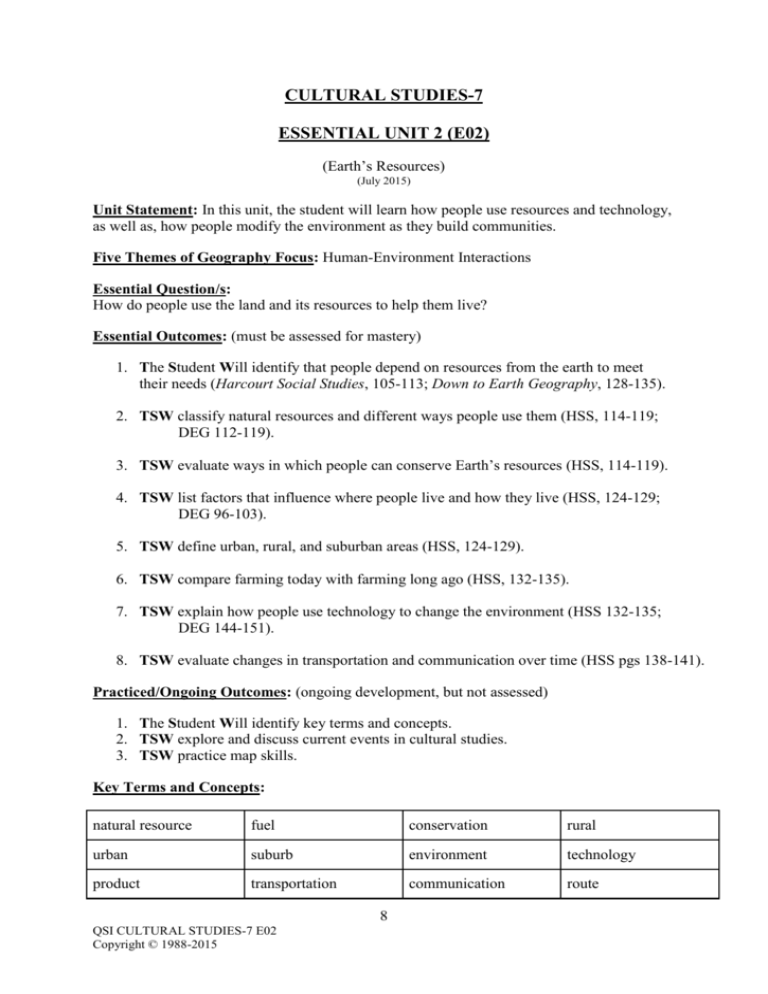
CULTURAL STUDIES-7 ESSENTIAL UNIT 2 (E02) (Earth’s Resources) (July 2015) Unit Statement: In this unit, the student will learn how people use resources and technology, as well as, how people modify the environment as they build communities. Five Themes of Geography Focus: Human-Environment Interactions Essential Question/s: How do people use the land and its resources to help them live? Essential Outcomes: (must be assessed for mastery) 1. The Student Will identify that people depend on resources from the earth to meet their needs (Harcourt Social Studies, 105-113; Down to Earth Geography, 128-135). 2. TSW classify natural resources and different ways people use them (HSS, 114-119; DEG 112-119). 3. TSW evaluate ways in which people can conserve Earth’s resources (HSS, 114-119). 4. TSW list factors that influence where people live and how they live (HSS, 124-129; DEG 96-103). 5. TSW define urban, rural, and suburban areas (HSS, 124-129). 6. TSW compare farming today with farming long ago (HSS, 132-135). 7. TSW explain how people use technology to change the environment (HSS 132-135; DEG 144-151). 8. TSW evaluate changes in transportation and communication over time (HSS pgs 138-141). Practiced/Ongoing Outcomes: (ongoing development, but not assessed) 1. The Student Will identify key terms and concepts. 2. TSW explore and discuss current events in cultural studies. 3. TSW practice map skills. Key Terms and Concepts: natural resource fuel conservation rural urban suburb environment technology product transportation communication route 8 QSI CULTURAL STUDIES-7 E02 Copyright © 1988-2015 Cross-curricular Suggestions: Art: ● Paint pictures of cans brought in for recycling in the style of Andy Warhol. Writing: ● Create posters to raise environmental awareness for the school. Mathematics: ● Weigh filled recycling containers using different types of scales. ● Create graphs showing amounts of items brought in for recycling. Science: ● Take field trips to local recycling plants, farms, or water treatment facilities. Suggested Materials: (provided by school) Harcourt Social Studies: People We Know, Grade 2 Down to Earth Geography, Grade 2 Additional Resources: (may not be provided by school) Where Does Energy Come From?, Houghton Mifflin Social Studies At the Coal Mine, Rigby Focus Cities Then, Cities, Now Houghton Mifflin Social Studies Technology Links: Destiny Webpath Express (see Librarian) Use this search engine to find age-appropriate websites that align with your unit. Harcourt School Studies World Regions Online http://www.eharcourtschool.com/ This website has all of the textbook resources online, an atlas, a geography glossary, multimedia biographies, and Video Extenders. Discovery Education http://www.discoveryeducation.com/ This website has a variety of geography information, news, videos, and pictures for elementary students. National Geographic for Kids http://kids.nationalgeographic.com/ This website has a variety of geography information, news, videos, and pictures for elementary students. Time for Kids http://www.timeforkids.com/ Suggested Assessment Tools: 1. Attached rubric or teacher-generated rubric that assesses ALL essential outcomes (TSWs). An effective rubric is presented and discussed with the student at the beginning of the unit, referred back to throughout the unit, and used to assess at the end. Students will collaborate with peers and the teacher to assess mastery of the unit with final judgment by the teacher. RUBRIC FOUND ON FOLLOWING PAGE……………………… 9 QSI CULTURAL STUDIES-7 E02 Copyright © 1988-2015 Name: Date: CULTURAL STUDIES-7 E02 RUBRIC (Earth’s Resources) To receive a ‘B’, the student must show ‘B’ level mastery on ALL Essential Outcomes (TSWs). To receive an ‘A’, the student must show ‘A’ level mastery on 4 of 6 available TSWs and ‘B’ level mastery on all TSWs. The Student Will 1. TSW identify that people depend on resources from the earth to meet their needs (HSS 105-113; DEG, 128-135). ‘A’ Level I can also evaluate what might happen if we did not have these resources. ‘B’ Level I can identify different resources that people need. 2. TSW classify natural resources and different ways people use them (HSS, 114-119; DEG 112-119). I can classify earth’s resources. 3. TSW evaluate ways in which people can conserve Earth’s I can also evaluate the effectiveness of resources (HSS, 114-119). different methods of conserving Earth’s resources. I can tell ways in which people can conserve Earth’s resources. 4. TSW explain factors that influence where people live and how they live (HSS, 124-129; DEG 96-103). I can identify different reasons people choose to live in certain places. I can evaluate the ways that geography and climate change how people live. 5. TSW compare urban, rural, and suburban areas (HSS, 124-129). I can compare urban, rural, and suburban areas. 6. TSW compare farming today with farming long ago (HSS, 132-135). I can also explain how changes in farming I can compare farming today with farming have led to environmental changes. long ago. 7. TSW explain how people use technology to change the environment (HSS 132-135; DEG 144-151). I can also compare the benefits of I can explain ways that people use technology to the problems it can cause in technology to change the environment. the environment. 8. TSW will evaluate changes in transportation and communication over time (HSS 138-141). I can also explain how the world has changed because of the changes in transportation and communication. 10 QSI CULTURAL STUDIES-7 E02 Copyright © 1988-2015 I can tell about ways that transportation and communication have changed over time. P- in progress

